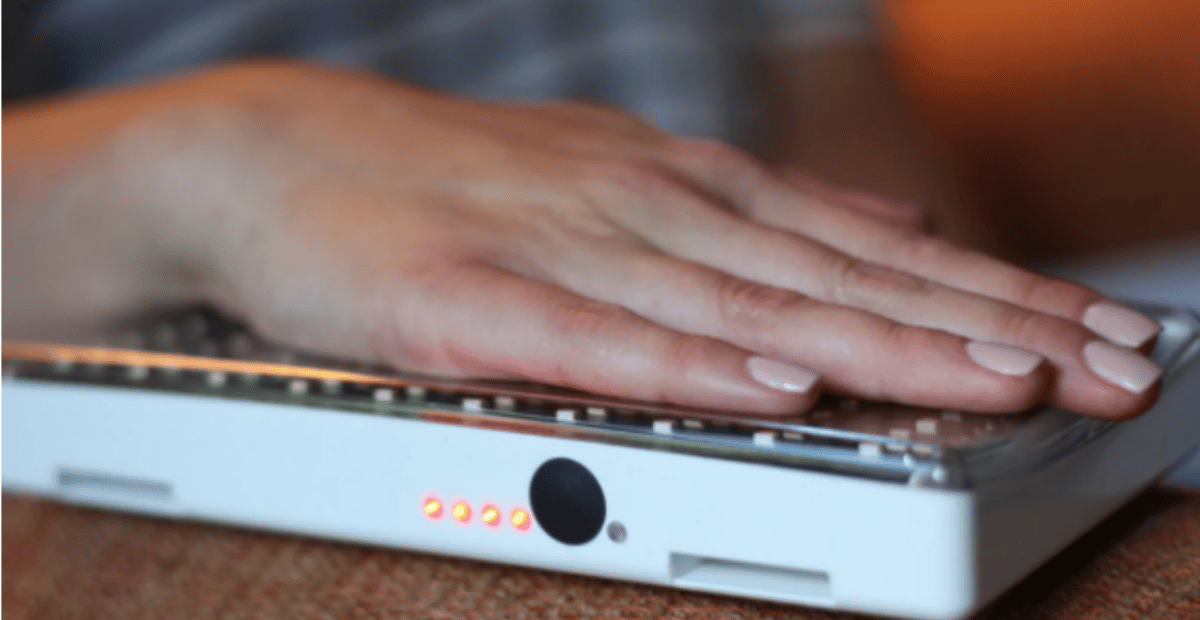Red light therapy for neuropathy is emerging as a promising, drug-free solution for individuals seeking relief from nerve pain, tingling, and numbness. By stimulating circulation and supporting cellular repair, this non-invasive treatment is gaining popularity among those looking for natural alternatives to manage chronic nerve discomfort.
This article will discuss how red light therapy works, why it's considered effective for neuropathy, the scientific evidence behind its use, and how to incorporate it safely into your care routine. Keep reading to uncover how this technology could support your journey toward lasting nerve relief without side effects or invasive procedures.
What Is Neuropathy?

Neuropathy is a condition that occurs when the peripheral nerves, which transmit signals between the brain, spinal cord, and the rest of the body, become damaged or dysfunctional. This disruption in communication can lead to symptoms that vary in severity, ranging from mild tingling to debilitating pain or loss of motor control, especially in the hands and feet.
The causes of neuropathy are diverse, but many stem from chronic conditions or physical trauma. If left untreated, neuropathy can progress, affecting balance, sleep, and overall quality of life. Understanding its root causes and symptoms is key to managing the condition effectively.
Common Causes:
-
Diabetes (most common cause)
-
Nerve trauma from injury or surgery
-
Chemotherapy or toxic exposure
-
Autoimmune diseases (e.g., lupus, rheumatoid arthritis)
Common Symptoms:
-
Burning or shooting pain
-
Numbness or “pins and needles”
-
Muscle weakness
-
Sensitivity to touch or temperature
How Red Light Therapy Works on Nerves

Red light therapy uses specific wavelengths of red and near-infrared light to penetrate the skin and stimulate cellular activity. This process enhances the production of adenosine triphosphate (ATP), the energy source cells need for repair and regeneration. As a result, it promotes better circulation and reduces inflammation, all without damaging tissue.
For individuals dealing with neuropathy, these effects can offer real benefits. Red light therapy for neuropathy helps deliver more oxygen and nutrients to damaged nerves, supporting their recovery and reducing discomfort. When used consistently, it provides a non-invasive, drug-free option to promote long-term nerve health and pain relief.
Red Light Therapy for Neuropathy: What the Research Says
A growing body of research supports red light therapy as an effective complementary treatment for neuropathy.
Clinical Highlights:
-
A 2016 study in Pain Research and Management found that red and near-infrared light therapy significantly reduced pain and improved sensation in diabetic patients with peripheral neuropathy.
-
A 2021 review published in Lasers in Medical Science confirmed that red light therapy improved nerve conduction and function over multiple sessions.
-
Patients reported reduced burning, numbness, and cramping, with many experiencing results within 2–4 weeks of regular use.
Red light therapy is non-pharmacological, meaning it doesn’t interact with medications, a key benefit for those managing multiple conditions. And because it targets inflammation and circulation, it’s especially promising for diabetic or chemotherapy-induced neuropathy.
How to Use Red Light Therapy at Home for Neuropathy
Home-use red light therapy devices are now widely available and easy to operate. Here's how to safely use one to help relieve neuropathy symptoms:
Step-by-Step Instructions:
-
Identify treatment zones
Focus on areas where symptoms are present, usually the feet, calves, hands, or forearms. -
Prep your skin
Clean the skin and remove any lotions or oils that may block light absorption. -
Position the device properly
Keep the light 6–12 inches from your skin (or follow your device’s specific distance guide). -
Set the right duration
Treat each area for 10–20 minutes, 3–5 times per week. -
Use consistently
Regular use (for 4–6 weeks) is key to seeing results. Document your progress in a symptom tracker. -
Don't overuse
Stick to your schedule. More time under the light doesn’t equal faster healing and may irritate the skin.
Always wear protective goggles if treating near the eyes, and consult your doctor before starting if you have medical implants or chronic conditions.
Best Devices for Red Light Therapy for Neuropathy
When choosing a device for red light therapy for neuropathy, factors like wavelength depth, treatment area, and build quality can greatly affect your results. The following options are designed to support nerve regeneration and pain relief using advanced red and near-infrared light technology.
1. Epoch® 980nm Near Infrared Helios Portable Pain Management Device

This compact, handheld device delivers deep-tissue 980nm infrared light, ideal for localized nerve pain in the feet, legs, or hands. Its portability makes it perfect for daily use at home or while traveling.
2. Airvida Aura Red Light Therapy Bed

Designed for full-body wellness, the Aura Bed delivers broad-spectrum red light therapy suitable for systemic neuropathy. Its ergonomic design allows for maximum light absorption while lying down, making sessions comfortable and effective.
3. Airvida Radiance Red Light Therapy Bed

This upgraded bed offers professional-grade treatment for chronic nerve issues and overall circulation support. Ideal for home or clinic use, it’s built for those seeking comprehensive, long-term neuropathy relief.
4. Dr. Mueller Red Light + Vibration Plate

Combining red light with vibration therapy, this device stimulates both nerve regeneration and blood flow. It’s a unique option for neuropathy sufferers looking to improve balance, circulation, and nerve signaling.
Potential Side Effects & Safety Tips
Red light therapy is generally safe for most people, including those using it for nerve-related conditions. However, some users may experience minor side effects such as temporary redness, warmth on the skin, or mild sensitivity after prolonged sessions. When using red light therapy for neuropathy, it’s especially important to wear eye protection, as direct exposure can irritate sensitive areas.
Despite its benefits, red light therapy for neuropathy may not be suitable for everyone. Individuals with light-sensitive conditions, certain medications, or open wounds should consult a healthcare provider before starting treatment.
When to See a Specialist
Red light therapy is a supportive tool but not a replacement for medical care.
Consult a doctor if:
-
Your pain worsens or spreads
-
You develop muscle weakness or coordination issues
-
You have open sores, infections, or circulation problems
-
You haven’t seen improvement after 6–8 weeks of consistent use
A specialist can help you combine red light therapy with medications, supplements, or physical therapy for a more comprehensive treatment plan.
Final Thoughts: Natural Nerve Relief with Red Light
Living with nerve pain can make even simple daily activities feel overwhelming. Whether the cause is diabetes, injury, or another underlying condition, managing neuropathy often requires a thoughtful, multi-pronged approach. Lifestyle adjustments, diet, and physical activity all play an important role, but supportive therapies can make a meaningful difference in long-term comfort and function.
Red light therapy for neuropathy offers a non-invasive, drug-free option for those seeking to reduce pain, improve circulation, and support nerve repair. To learn more about the devices featured in this article and explore which solution best fits your needs, contact Airvida Chambers today.
Frequently Asked Questions on Red Light Therapy for Neuropathy
Can red light therapy heal neuropathy?
Red light therapy cannot cure neuropathy, but it may help reduce symptoms like pain, tingling, and inflammation by promoting nerve repair and circulation.
How long does it take for red light therapy to work for neuropathy?
Most users notice improvement within 2 to 6 weeks of consistent use, depending on the severity of symptoms and treatment frequency.
What is the most successful treatment for neuropathy?
Treatment depends on the cause, but a combination of medication, lifestyle changes, and supportive therapies like red light therapy is often most effective.
Can you overdo red light therapy?
Yes. Excessive exposure may lead to skin irritation or reduced effectiveness. Stick to recommended usage times and frequencies.
Is 10 minutes of red light therapy enough?
For many devices, 10 minutes per session is sufficient for targeted areas. Always follow the manufacturer’s guidelines.
You May Also Want to Read:
5 Surprising Benefits Explained: What Does Red Light Therapy Do?
Discover the Power of Red Light Therapy for Pain Relief
Ultimate Guide to Red Light Therapy for Hair Growth 2025
Disclaimer
Airvida and partners advice does not constitute medical advise and is intended for informative and educational purposes only with no medical or non medical claims being made. While research & studies show the potential Hyperbaric Oxygen Therapy (HBOT) and Hyperbaric Air Therapy (HBAT) may have implied benefits, individual results may vary. It is required by Airvida & Partners to console with doctors before being approved for Hyperbaric Therapy (HBOT & HBAT). Read More HERE




